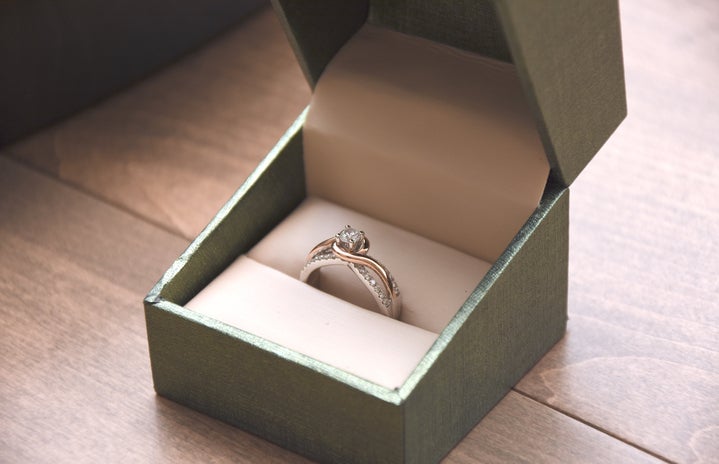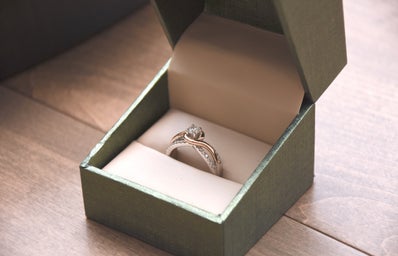Shows like Never Have I Ever and Indian Matchmaking reference arranged marriages but don’t explain their cultural significance. So, what is an arranged marriage? At its core, an arranged marriage is a marital union arranged by the family of the couple rather than the couple themselves. Typically, an individual’s parents arrange their marriage. For many, arranged marriages are the norm, but as these unions are introduced to Western audiences, it’s important to understand the rich history of arranged marriages as well as their modern form.
How long have arranged marriages existed?
Arranged marriages have existed for centuries despite only having been introduced into Western popular culture recently. In fact, arranged marriages were the norm across the world until the 18th century, when a custom of individualism began to permeate life. Customs for arranged marriages differ from region to region. Arranged marriages appear in early texts of the Bible as well as in ancient cultures. For example, in Ancient Rome, marriages were typically arranged by families. From the 16th to 19th century in England, arranged marriages were common among the upper class as a tool of economic mobility. If a young man wanted to inherit his parents’ wealth, he would have to obey their commands in marriage. If a young woman wanted to solidify her economic status, she would have to marry for wealth. In ancient India, arranged marriages originated for a similar purpose; they were used as a tool to maintain upper caste families’ wealth, social status, and traditions.
Essentially, arranged marriages have been used throughout history for the overall purpose of maintaining the prosperity of the familial line. In modern times, arranged marriages are agreements between families, but individuals who are getting married have more control in the choice of their future spouse.
Why are arranged marriages controversial?
The idea of an arranged marriage conjures an image of a bride who is unable to speak her mind coupled with an aloof or abusive groom, but the reality is that there are millions of arranged marriages which do not reflect this view. There is a negative stigma associated with arranged marriages, because they are often thought of as “forced marriages.”
The concept of an arranged marriage is often conflated with forced marriages. A forced marriage is one in which one or both individuals have been coerced into the union; one or both have not given free and full consent. Coercion can take many forms, including threat of physical violence, economic ruin, or social ostracization. These marriages are not arranged marriages. Arranged marriages are based in consent; the couple agrees to have their marriage be arranged and consent to marrying their partner. Critiques of arranged marriages which center around autonomy can reflect Western idealizations of marriage. It is important to acknowledge that arranged marriages are not opposed to the exercise of an individual’s ability to choose. They simply reflect the difference between Western and Eastern cultures. In the West, society is far more individualistic. People seek a partner for themselves, not for their families. In the East, society centers around the family unit. People seek a partner so that they can continue the family line and provide for their parents and extended family members.
What does a modern arranged marriage look like?
While it is true that ancient arranged marriages lacked freedom, modern arranged marriages are very different. Individuals have more negotiation-power than before. Children allow their parents to search for them but emphasize their right to refuse potential suitors. Further, technology has transformed the way that arranged marriages are formed, giving parents the ability to search sites for potential matches for their children. These sites have subsections for different regions within countries, which makes the process of finding a match within a person’s culture much easier. After the parent has found a match, the couple will meet for the first time with their parents. After the initial meeting, if no one objects, the couple will continue to date until they make the decision to get married. The process often includes external tools, such as matchmakers and astrologers, who ensure that the couple is well-suited for each other. If everything works out, the couple will remain together and happy for years to come.
However, even though many modern arranged marriages are based in free will, there are several instances in which this tradition is used as a cloak to disguise more sinister matches. For example, in Niger, 76% of girls are married before they are 18. Arranged marriages in Niger are used for the purpose of ensuring food security, but they lack consent because children are unable to give consent. The line between coercion and consent can be thin and it is difficult for legal authorities to verify whether a marriage has been arranged or forced.Often, it appears that arranged marriages are successful marriages. According to codeHER, the divorce rate for arranged marriages is 4% whereas the divorce rate for the United States, where arranged marriages are relatively infrequent, is between 40% and 50%. But this statistic can be deceptive. It is likely that people feel pressured by society to remain together, as countries in which arranged marriages are popular have strong stigmas against divorce. For many, marriage is the only option for a safe, secure life. It is also likely that the low divorce rate of arranged marriages is the result of mutual admiration which develops over time. People tend to like others the more that they interact with them; marriage is no different. There are plenty positive and negative explanations for the results of arranged marriages. Arranged marriages have come a long way from what they once were, but toxic traditions remain pervasive in many societies. Moving forward, acknowledging the long and rich history of arranged marriage, its significance in several cultures, and its advantages and disadvantages are necessary for nuanced discussions about marriage and relationships in society.


